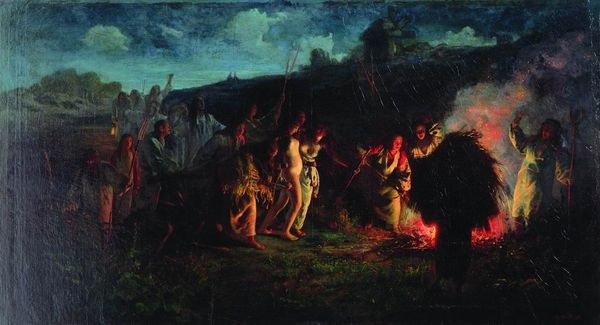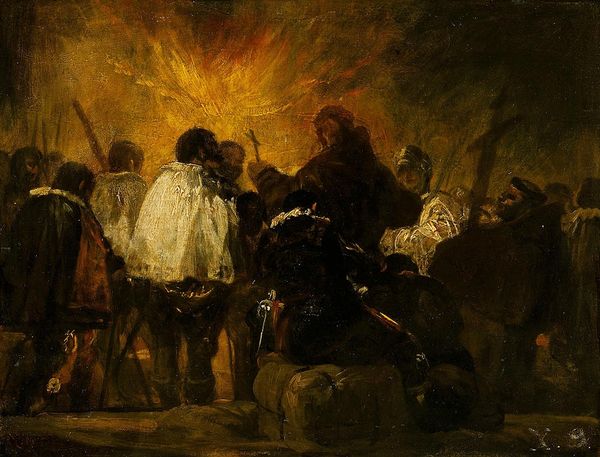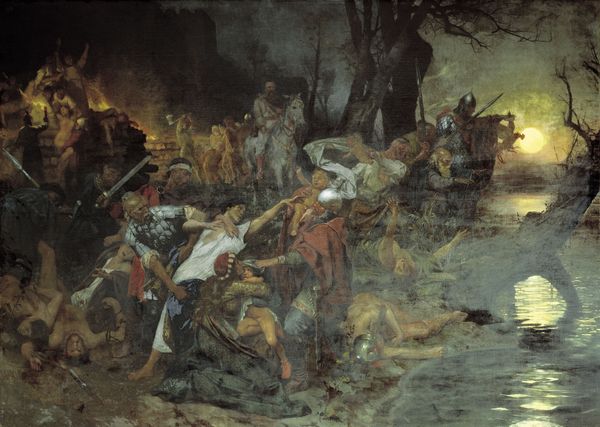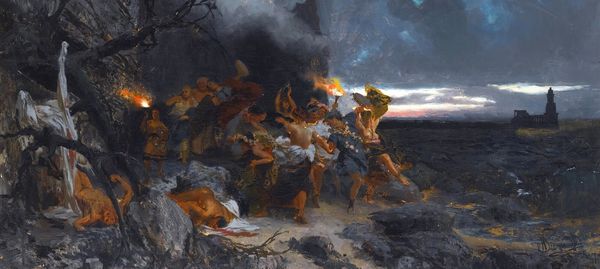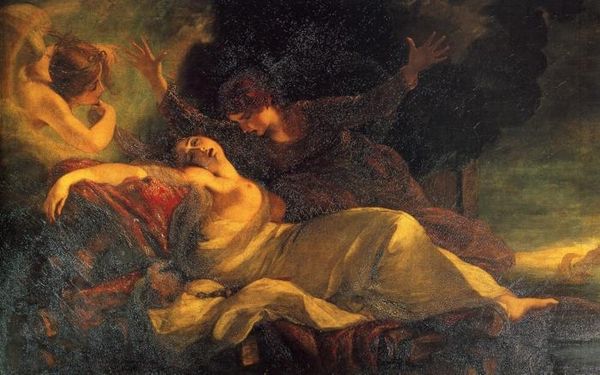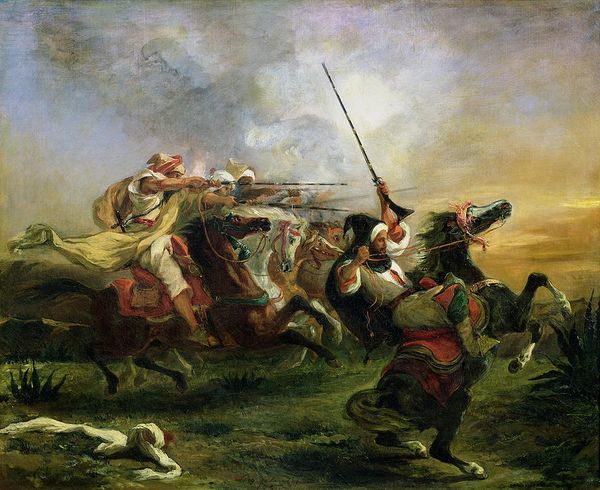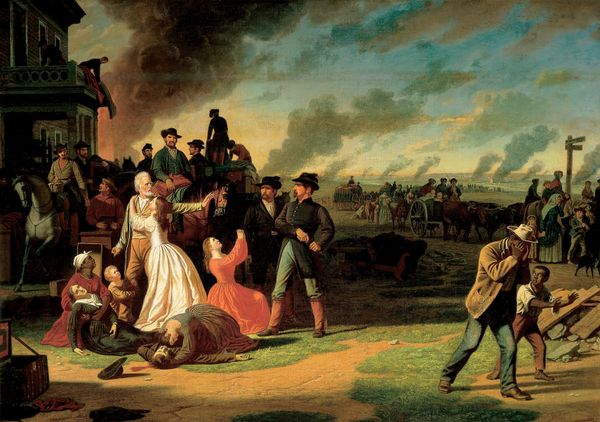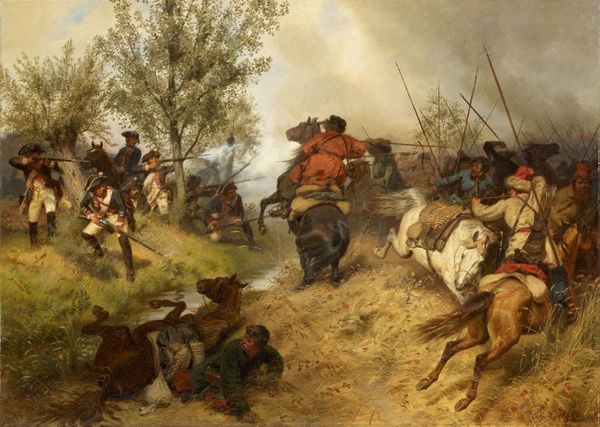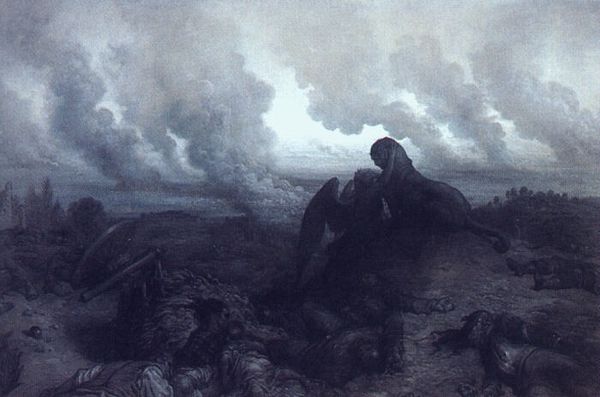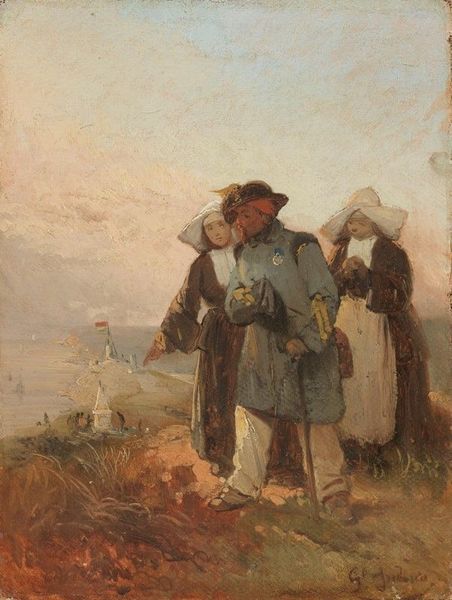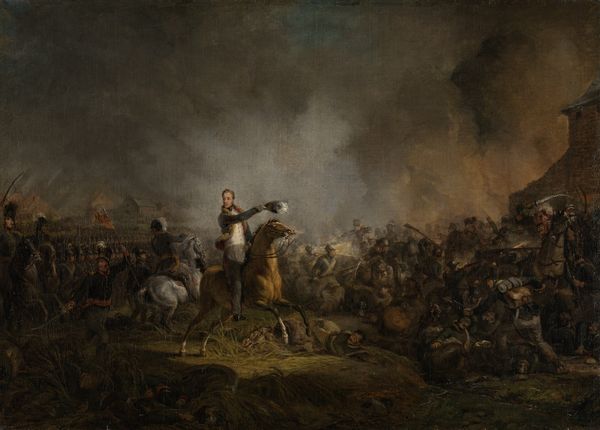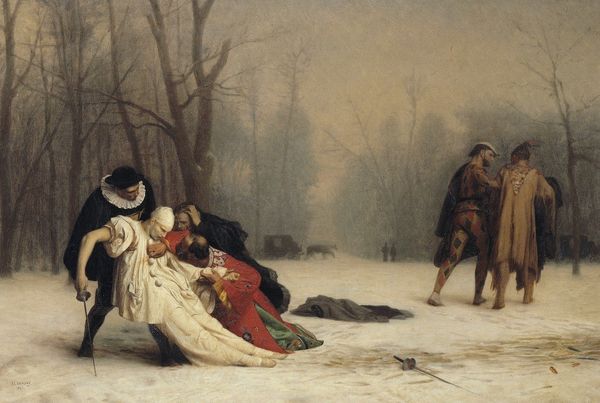
Copyright: Public domain
Curator: Bertalan Szekely’s “Mihály Dobozi and His Wife,” painted in 1861, is certainly arresting. The scene practically vibrates with tension. Editor: It does indeed. My first impression is of the visual drama, and the skillful rendering of light across the scene. Notice how the dark, somber tones in the foreground contrast sharply with the fiery glow emanating from the background conflagration. It’s quite effective in drawing the eye. Curator: Absolutely, that is the painting’s immediate strength. Beyond that, for me the symbol of Dobozi about to murder his wife so she is not enslaved represents honor and the cost of Hungarian resistance against Ottoman invasion in 1552. It's powerful how the painting suggests Dobozi's action is not merely despair, but a twisted form of love and freedom. Editor: Agreed. It evokes potent cultural memories. Consider the enduring motif of sacrifice, specifically female sacrifice, that’s woven through so many narratives. And it extends even into more secular realms of duty. Curator: I can see it. Szekely has deployed compositional strategies to highlight just this theme of forced duty. Consider the placement of the couple high in the frame in an almost isolated peak, but set against a horizon. That separation—that is brilliant compositional tension. They are alone at a precipice of not just terrain, but history. Editor: Precisely! And that is all framed by, and perhaps dwarfed by, that raging fire – a cleansing act on the horizon. It’s an act of defiance and a declaration of self-determination that resonates profoundly. Curator: Furthermore, it is difficult not to consider the work through the lens of Romanticism. How does this composition serve as a window into both emotional expression and a nationalist spirit in the work, especially regarding the compositional line which brings your eye back to that bright destruction again. Editor: The romanticism certainly suffuses it! The symbolic resonance feels particularly strong when we view it in the broader context of European Romanticism and the fascination with historical subjects carrying allegorical weight. Seeing them silhouetted like that…what could be a darker fate than that one he inflicts in their shared historical trauma? Curator: I feel as if my understanding has truly been expanded, particularly within a semiotic reading where Szekely uses historical narrative as the signifier to illustrate resistance against not just a particular power but powers in general. Editor: It’s a painting where formalism meets rich, resonant historical understanding. The perfect combination, if you ask me!
Comments
No comments
Be the first to comment and join the conversation on the ultimate creative platform.
